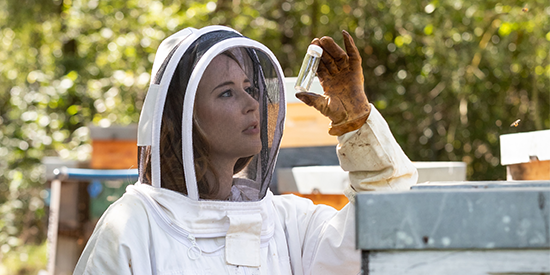How can we support our native bees?
Research news
To mark World Bee Day, Deakin researcher Scarlett Howard explains bee stressors and offers tips on how you can help.
Recently a global decline in insects has been reported, an “insect apocalypse” or “insectageddon”. Although the causes and extent are heavily debated, there is a general consensus that we need more research into insects, their behaviour, population trajectories, and the threats they face.
Recent research suggests that our most important and abundant pollinators, bees, have globally declined by 25%. Many native bees are identified as at risk from human influences, such as urbanisation, land-clearing and habitat loss/fragmentation, pesticide and insecticide use, climate change, disease spread, changed fire regimes, pollution, agricultural activity, and invasive species introductions.
However, in Australia we have very little information on how human activities and landscape changes impact our native bees.
Australia hosts over 2,000 native bee species, yet we know little about how they are impacted by the major threat of urbanisation. Researchers at Deakin University are tackling this question in the Centre for Integrative Ecology.
Behavioural changes in animals are vital predictors of both stress and adaptation in animals. Therefore, studying these changes can help us determine how bees are coping in an urbanised world. Furthermore, changes to bee morphology can also identify if bees are more stressed in urban environments. For example, ground beetles show more exploratory behaviour and butterflies are bolder when originating from urban areas. Similarly, honeybees experience greater wing asymmetry in highly urbanised areas, a sign of stress.
My research will determine whether native and introduced Australian bees exhibit changes in important behaviours such as learning abilities, flower preferences, foraging decisions, and pollination capacity across different landscapes of varying degrees of urbanisation (eg: cities, farms, residential areas, undisturbed habitat).
You can get involved in conserving, protecting, and supporting Australia’s native bees by planting native bee-friendly flora and participating in our community science project to map bees across different landscapes.
Bees At Home is a monthly photography competition open for everyone in Australia with a camera (a phone is fine). There are prizes for ‘best photos’, ‘participation’, and ‘best picture of a bee hotel’ to be won each month.
Upload your image/s on Flickr.com with the hashtag (#BeesAtHome), the hashtag of the category you want to enter, and the postcode for where the photo was taken. There are five categories:
- European honeybees (#Honeybee)
- Blue-banded bees (#Bluebandedbee)
- Cuckoo bees (#CuckooBee)
- Reed Bees (#ReedBee)
- Any insect (#insects)
Good luck and we hope to see your photos soon!
Share this story

